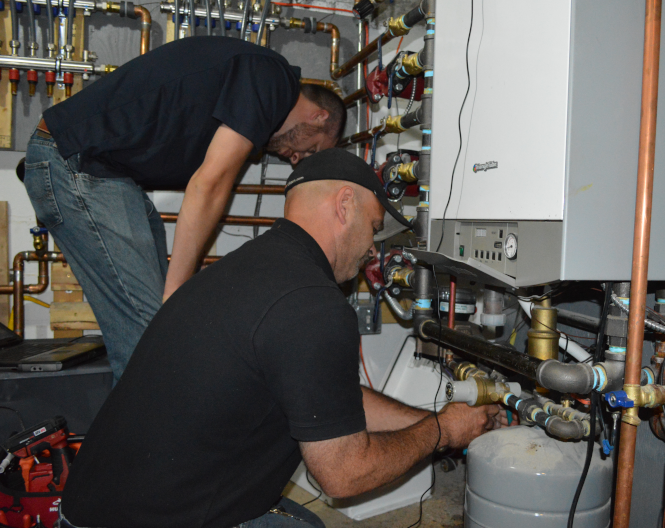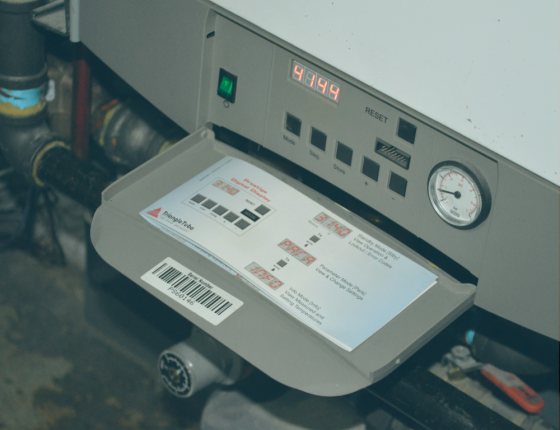Objective
High-efficiency condensing boilers have been available in the residential market for many years, but consumer acceptance and market penetration is low. The purpose of this research project was to characterize the installed performance of condensing boilers in Minnesota homes to evaluate efficiency levels and determine the energy savings related to their use. Project findings were used to recommend quality installation best practices to ensure that all new high-efficiency condensing boilers in the state achieve their expected efficiency.
Methodology
 The team interviewed HVAC companies and homeowners to learn more about their disposition toward, and experiences with, high-efficiency condensing boilers. CEE’s Innovation Exchange researchers gathered data on existing condensing boiler installations and monitored the performance of residential systems. Researchers also retrocommissioned those systems, and provided quality installation procedures for new installations. Both categories of boilers, retrocommissioned and new quality installations, were monitored in the field to determine their energy savings and performance.
The team interviewed HVAC companies and homeowners to learn more about their disposition toward, and experiences with, high-efficiency condensing boilers. CEE’s Innovation Exchange researchers gathered data on existing condensing boiler installations and monitored the performance of residential systems. Researchers also retrocommissioned those systems, and provided quality installation procedures for new installations. Both categories of boilers, retrocommissioned and new quality installations, were monitored in the field to determine their energy savings and performance.
Overall, the team monitored thirteen condensing boilers in Minnesota homes and collected data on supply and return water temperature, flow rates, incidence of condensing, and energy use across all systems — which represent a wide range of single-family installations with different brands, emitter types, zone set-ups, and outdoor reset control installation and set points. Interviews were conducted with contractors/distributors and homeowners, and an economic analysis of installation cost was performed.
The project’s field research was conducted in two phases. Phase I focused on six homes where a non-condensing boiler had been replaced with a condensing boiler within the last seven years. Phase II focused on seven customers with an interest in replacing their non-condensing boiler with a condensing boiler as part of the project.
Results
Data from both phases was used to determine annual energy consumption and seasonal operating efficiency. Annual performance between operation modes and phases was compared and an estimated baseline boiler established. In addition, annual energy performance, runtimes, and installed efficiencies were also examined.
- The as-found operation had better than expected space heating performance. The vast majority of days had space heating efficiencies of 85% and above.
- The space heating efficiencies were between 86% and 95%, with an average annual efficiency of 90%. While slightly lower than the rated AFUE (average AFUE was 94%), these installed efficiencies are in line with the expected efficiencies of well-installed systems.
Based on these findings, the as-found condensing boilers would expect to save 14% annual heating energy consumption over a baseline boiler installation.
CIP recommendations
- Continue to provide a higher rebate tier for 90+% (condensing) boilers. Condensing boilers are operating at or near their rated efficiency and currently are or have the ability to achieve cost effectiveness.
- Include a checklist on the submitted rebate form with the installation criteria listed above in order to ensure better performance. This could include a settings section for the contractor to report predominant emitter type and water temperature set points, and outdoor air temperature settings for minimum and maximum water temperatures.
- Offer contractor training. These added criteria likely warrant some contractor training. We recommend that utilities sponsor training for HVAC contractors performing rebate work that is focused on condensing boiler installation protocols and the ways to obtain the additional savings results seen in this project.
Objective
Evaluate the efficiency and performance of existing residentialcondensing boiler systems, as well as the experience of HVAC installers with condensing boiler systems, and develop better installation and retrocommissioning practices to improve system efficiency.
Scope
Measure performance before and after retrocommissioning 7-9 boiler systems, and install new systems at 7-9 additional sites.
Non-energy benefits
Improved boiler efficiency could eliminate the need for a make-up air duct, increasing air sealing and thermal comfort, and reduce the risk of depressurization induced combustion safety issues.
Related Reports & Tools
